
Jeanne Socrates’ Records
On October 24, Jeanne Socrates set sail from Victoria, B.C. aboard her Najad 380 Nereida bound for…Victoria. In the wee hours of Monday morning, she crossed her outbound track, thus completing her first nonstop singlehanded circumnavigation. This was Jeanne’s third attempt at solo circumnavigation — her first try ended just 60 miles from her goal when her boat was lost on a remote Mexican beach, and her second ended after a violent knockdown at Cape Horn damaged her new Nereida.
This time around, Jeanne set her sights on a couple of records, one official and one unofficial. Solo circumnavigator Tony Gooch took her times for the World Sailing Speed Record Council, and verification should come soon that she is the first woman to have sailed solo nonstop around the world starting from North America. A possibly more impressive, but unrecognized, record is that, at 70, she has become the oldest woman to do so.
We’ll have a full report on Jeanne’s amazing accomplishment in the August issue of Latitude 38, but in the meantime, watch a nice Canadian news report on her journey and check out her log.
The Loss of Zen
While the crews of more than 150 cruising boats were celebrating their safe arrival in French Polynesia during recent weeks, the dreams of one adventurous West Coast couple was quashed off the Baja Coast, before they even reached the trade winds.
After sailing their Iroquois 30 catamaran Zen II down the coast from Alameda, GD ‘Zen’ French and his wife ‘Lady Zen’ set out for Hawaii last last month, with plans to eventually reach Japan, where they would retire.
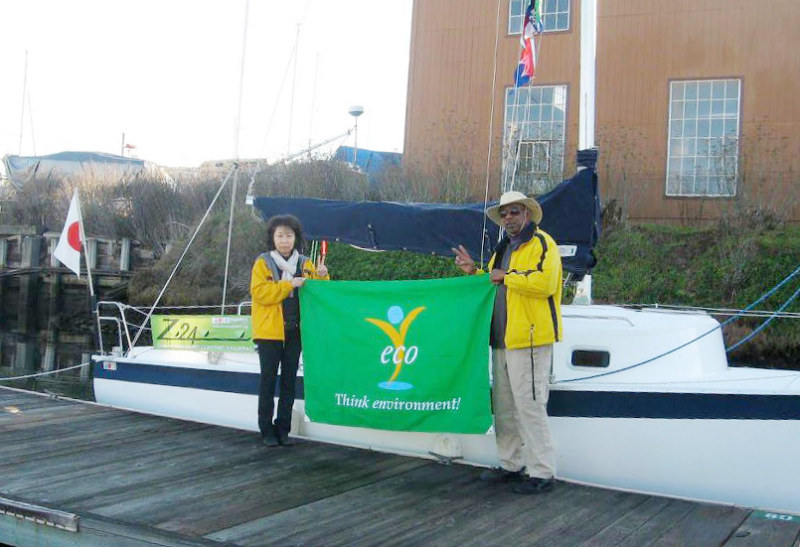
But only days after jumping off from Southern California and beginning their nearly 2,000-mile westward voyage, they were sobered by the difficulties of offshore sailing — especially in such a small boat. One of the cat’s twin rudders became inoperable early on, but Zen did his best to jury rig it, while learning to control the boat with a single rudder. Eventually, the couple decided to head for Ensenada for repairs.
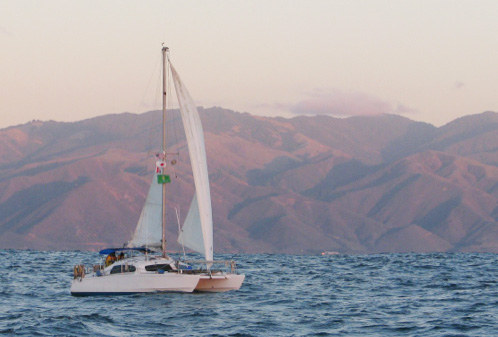
Although their lengthy blog posts indicate that their offshore experience was truly miserable, they were initially reluctant to call for help and abandon ship, although they did keep the U.S. Coast Guard apprised of their deteriorating situation. Finally, on the 18th day of misery — including a long period of frustratingly light winds — they gave in and set off their EPIRB while roughly 250 miles offshore. "Lady Zen is in panic mode. She is stuttering when trying to speak," wrote Zen. "Tomorrow expecting 16- to 20-ft seas. No way we can handle that with a broken rudder and nerve-wracked crew. All we can do now is wait for the end of this ill-fated trip. So sad, such an end to a dream." They were eventually rescued by an oil tanker whose crew took excellent care of them while en route to Long Beach.
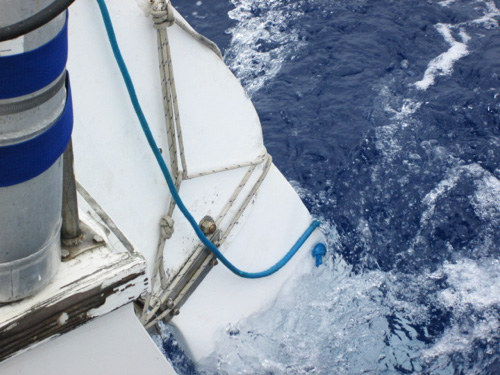
To his credit, Zen published a brutally honest self-analysis on his blog: "I am not a sailor, l guess that is one lesson from this. I can sail, I can handle the boat well and blend with the element, however the moments of pleasure have been slight. There were a few moments when the flow was there, the sequencing, the harmony of movement, with water, wind and self were balanced, beauty. However, a real sailor would live for this adventure. I have been miserable since we left. I guess I am just a weekend sailor. I do not want to do this passage stuff again."
We understand that friends back home and some cruising sailors have offered financial assistance to this unfortunate couple, so that they can fly to Japan and realize their retirement dreams there. We wish the both the very best of luck. Meanwhile, Zen II is apparently still adrift somewhere off the coast of Baja. Its coordinates on June 18 were 24.6187N, 118.256W. If you’re headed south, keep a sharp lookout.
First TransPac Division Starts
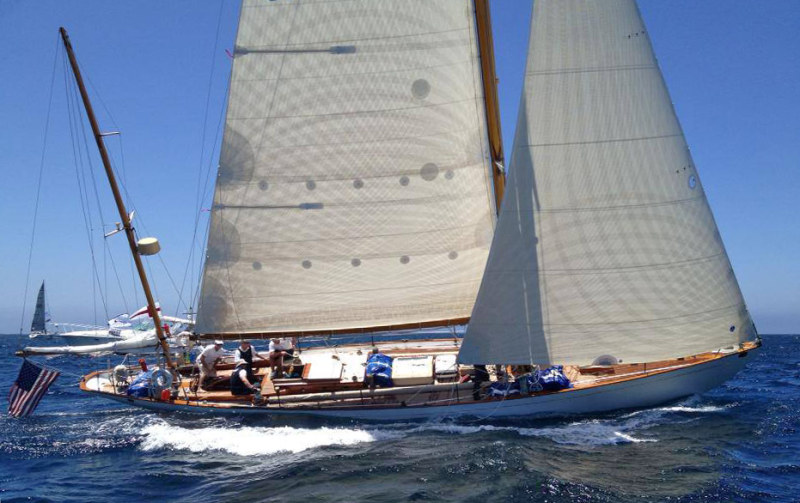
Fourteen boats from Divisions 7 and 8 of the 47th TransPac Race from San Pedro to 2,225-mile distant Honolulu got away on Monday in ideal conditions. There were 15 knots of wind out of the west at the start, and the wind built into the night.
Two boats we’re following with particular interest are a couple of old woodies. The first is Sam and Willie Bell’s Seal Beach- and Los Angeles YC-based Lapworth 50 Westward, which was built in 1962. The last time we saw her was on the hook in Bequia about 25 years ago, and she was looking a little rough back then. But she’s turned in an excellent 24-hour run of 224 miles in what often is the slowest part of the race.
The other woody is the lengendary S&S 52 Dorade, built 33 years before Westward, which Matt Brooks of Fremont and the St. Francis YC had completely restored. Brooks is in the middle of redoing all the races Dorade sailed in — and won — from 80+ years ago. This includes the TransPac, the Transatlantic Race, the Fastnet Race, and so forth. Dorade turned in a very nice 189 miles.
The next two TransPac starts are on July 11 and 13, which is when the bad boys have at it.
The TransPac YC has an excellent website for following the action on their live (six-hour delay) tracker, and this is a particularly exciting TransPac year, so check it out!
In the Mini 650 Pacific Challenge, there is only one left. After two of the five entries were DSQd before the start, and two others resigned from racing, only Belmont’s Sean McGinn on his custom Zero Daisy Cutter is left racing. He’s understandably disappointed but vows to continue his journey. "Having survived a windy night, which required him to take a 3rd reef," notes a report on the event’s website, "he pledged to soldier on and carry the burden of making the Mini 650 Pacific Challenge a part of sailboat racing history.
Another Meaningless Kiwi Victory
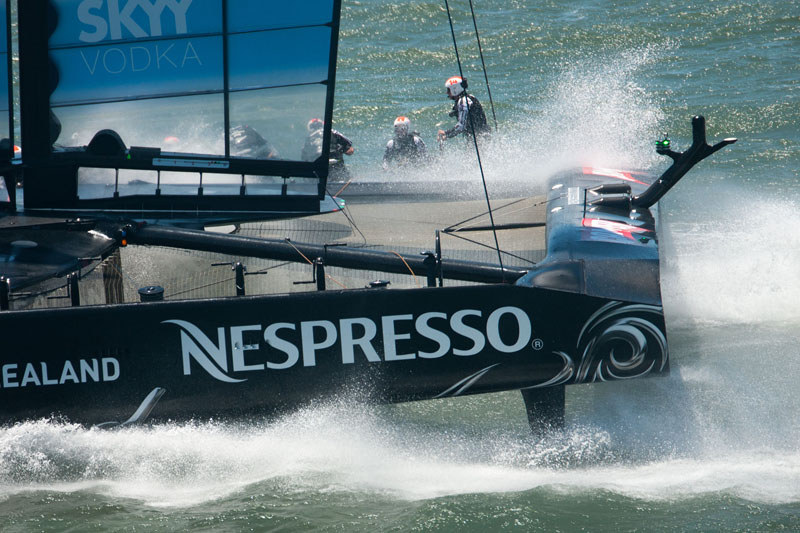
It wasn’t too surprising that Emirates New Zealand won their second straight Louis Vuitton Series race yesterday, as for the second time in a row, theirs was the only boat on the course. They sailed faster than in the first race and looked great, but as much as we hate to say it, the 34th America’s Cup is becoming more of a farce every day. The Kiwis sailed alone in the first race because the Italians boycotted it. Yesterday they sailed alone because the Artemis team didn’t have their AC72 ready. And so it goes for the misnamed ‘Summer of Sailing’.
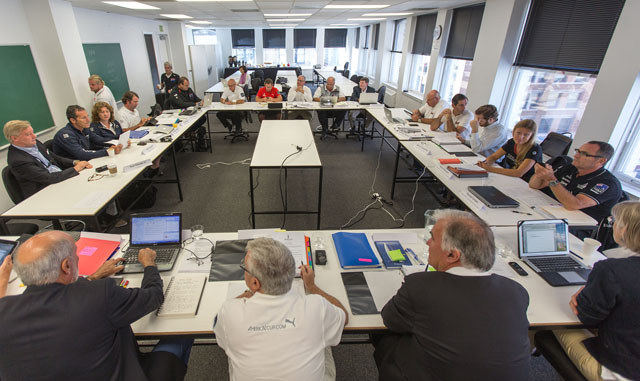
Indeed, the big action is again off the water, as the International Jury convened today to decide whether the changes to the rules regarding the elevators should be allowed or not. If the jury decides the new regulations should be tossed, Artemis says they won’t be able field a boat to compete, which would reduce the America’s Cup participants to a mere three. Iain Murray, Regatta Director of the America’s Cup, says if the new rules are tossed, he’ll have to go back to the Coast Guard and apply for another permit for the event, which puts the whole Cup in jeopardy. If the jury rules that the new elevator regulations can stay in effect, the Luna Rossa Italians have threatened not to compete.
All in all, the action ashore is as messy as an AC72 foiling is clean.
A decision by the jury is expected to be reached today. Or maybe Saturday. At which time the competition will no doubt resume . . . on land more than on sea.
